The Das Keyboard 'Prime 13' & '4 Professional' Mechanical Keyboard Review
by E. Fylladitakis on January 10, 2017 8:00 AM ESTThe Das Keyboard Prime 13 Mechanical Keyboard
The Das Keyboard Prime 13 shares the same postmodern design of the Das Keyboard 4 Professional, with an aluminum top cover and a plastic lower frame. The company logo is printed at the top right corner of the aluminum cover, in only white color this time. In essence, the Das Keyboard Prime 13 is aesthetically almost the same as the Das Keyboard 4 Professional, except from the missing sound volume wheel and the multimedia buttons. However, beyond aesthetics, there are several practical differences between the two keyboards.
We received the US layout version of the Das Keyboard Prime 13. It is a standard 104-key keyboard that fully adheres to the ANSI layout, with a normal bottom row. The bottom row of the keyboard has a 6.25× Spacebar and seven 1.25× bottom row keys. The left "Windows" key has the Das Keyboard company logo printed on it. The right "Windows" key has been replaced with the "Fn" key that can be used to access advanced functions via keystrokes.
The keycaps of the Das Keyboard Prime 13 have laser etched characters that, in comparison to the Das Keyboard 4 Professional, are significantly larger and moved towards the top center of the keycap. This was the reasonable thing for the designer to do, as the Das Keyboard Prime 13 features LED lighting and reasonably sized characters right above the position of the LED are a necessity.
Much like the Das Keyboard 4 Professional, the Das Keyboard Prime 13 has no macro keys and no programmability options. The extra few multimedia buttons and the volume control wheel are now gone too, with the extra functions that the Das Keyboard Prime 13 capable of performing being accessible via keystrokes. By holding down the Fn key, pressing F1/F2 controls the brightness of the backlighting, F5-F7 offer basic multimedia controls, F9-F11 control the sound volume and the ESC key puts the computer to sleep.
Unlike its more expensive counterpart, the Das Keyboard Prime 13 has only one USB port at the rear top right corner of the keyboard. The port not only is USB 2.0 but it also requires an extra USB connector at the PC's side, as the thick braided cable of the Das Keyboard Prime 13 splits to two USB connectors, one for the keyboard itself and one for its USB port. If the USB port is not going to be used, then the keyboard will function normally with just its main USB connector inserted.
Again, beneath the keycaps we find original Cherry MX switches. This time however the switches have LEDs attached. We also found that Das Keyboard switched to cross-type Cherry stabilizers for all of the keys, which hints that the designer expects that the target group of this keyboard will at least try and remove the keycaps, even if only for cleaning.
The white backlighting of the Das Keyboard Prime 13 is very well applied and stunningly bright. With the LEDs at their maximum brightness, using the keyboard in a very dark room is practically intolerable. A very slightly blueish hue spills around the keycaps, the effect of which is largely enhanced by our camera's lens, from the light bouncing on the black steel plate beneath the keys. We should also mention that the switches of the ESC row have been placed upside down, illuminating the advanced commands that are etched on the front side of the keys. This was an excellent design choice and the visual effect is excellent when viewing the keyboard on a desktop. We should also note that the LEDs will automatically switch off after 10 minutes of inactivity and come back on once a key has been pressed.
Internally, the Das Keyboard Prime 13 has only one PCB, which also is entirely different than that of the Das Keyboard 4 Professional. We noticed no significant quality shortcuts, with the assembly job and materials being of excellent quality. The significant downgrade is the Holtek HT68FB560 microcontroller. With an internal clock of 12 MHz and 16 KB of flash memory, it seems to be majorly inferior to the Nuvoton microcontroller that the Das Keyboard 4 Professional is using, yet it still is more than enough for a keyboard without any programmability options.


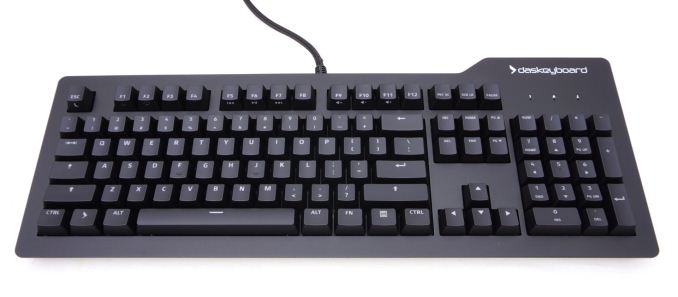
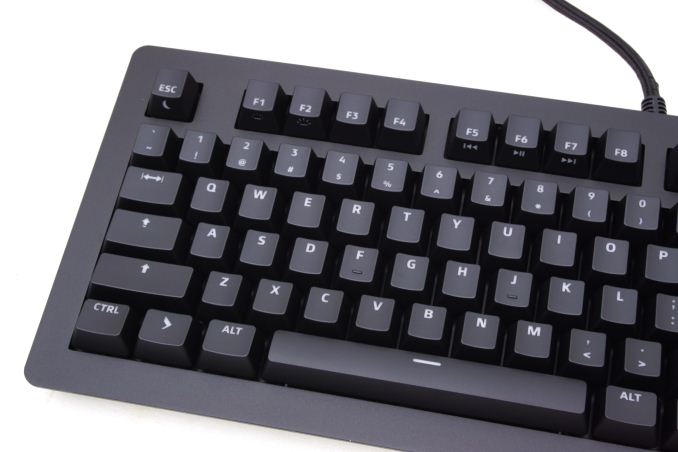
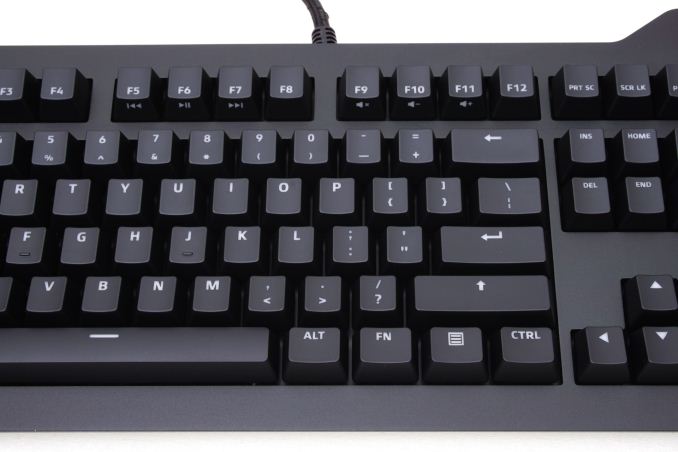
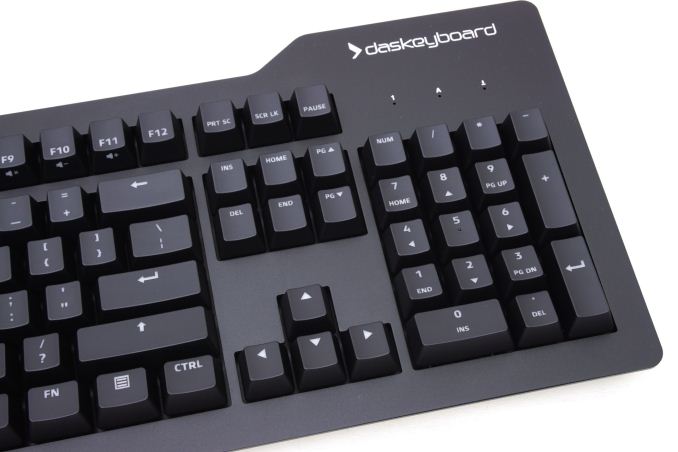

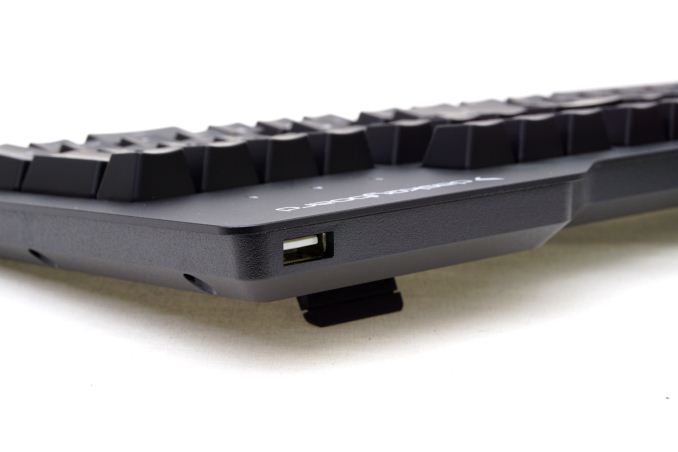
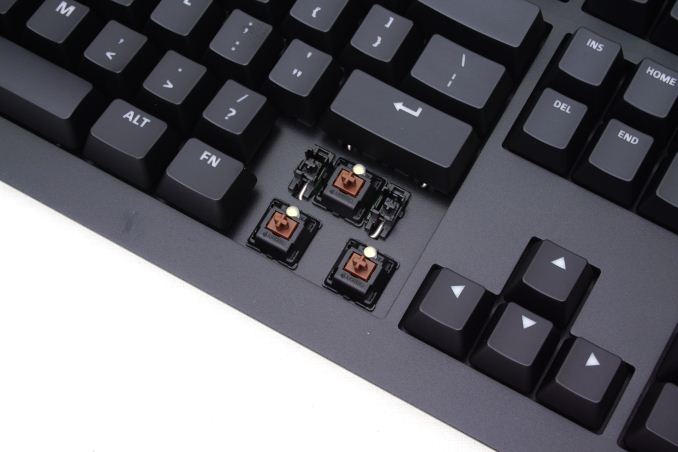

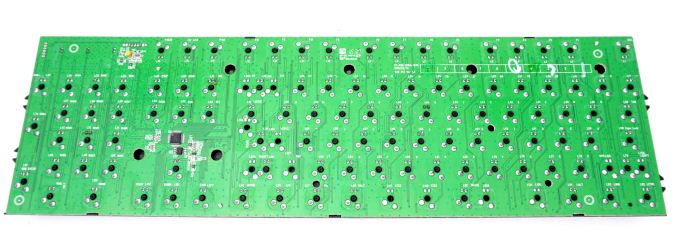









58 Comments
View All Comments
Zan Lynx - Wednesday, January 11, 2017 - link
I noticed a thing in the article that I missed before. The author wrote, "programmers tend to reprogram certain keys to insert ready, frequently repeating code" and I have to say, "No, we don't."We have editors for that. Programmable editors, because we are programmers. Java editors like Eclipse get extensions in Java. Atom in Javascript. Emacs in elisp, VIM in vimscript, LUA or Python. Etc.
No one bothers writing macros for their keyboard. That would be incredibly limiting and a dumb idea.
E.Fyll - Wednesday, January 11, 2017 - link
Well, you don't actually need to write a macro if the software allows you to just copy-paste your code into it. :)Depending on what exactly that is you do, sure you can be using macros to insert common, repeating commands and very efficiently so. I know quite a few people who do that myself. No matter how good the editor is, the code is not going to write itself. For example, Eclipse will create your packages and classes, but it won't start adding things like fields, declarations and strings. Why type "//fields - private field 1/2/3/4...X" when you can just insert it and then just type the field names, then do the same with Constructors and CTRL+Space your way through the code from then on? Unless if Eclipse got a lot smarter since I last used it, and that was several years ago, you certainly need to start typing a lot of repetitive commands when you need to program something.
Programming aside, I even do it when I expect a piece of text, even if it is just a name or cell code, to repeat itself many times in whatever what I'm working on is. I just insert it as a macro by pasting it into the keyboard's software and then just press that button whenever I need to.
Do not mistake that with having the keyboard insert huge chunks of text/code for you; well, at least not if you don't have some weird repeating template that you work on all the time for some very strange reason.
E.Fyll - Wednesday, January 11, 2017 - link
"...in whatever what I'm working on is."And I'm not even drunk.
"...in whatever I'm working on."
Wolfpup - Wednesday, January 11, 2017 - link
Thanks for the review! I've been using mechanical keyboards for some years now, thanks to this site, as the membrane keyboards kept getting worse and worse by the year.I like that Das Keyboard has media controls on their keyboards now-that was the one thing preventing me from buying one before.
I've only used Cherry MX Brown, so it's possible I'd like something else better, but I like them a lot and don't plan on ever using a keyboard that doesn't use Cherry MX.
I'll definitely look at Das Keyboard next time I buy! (Among other things, I've got two Razer keyboards, but they switched from Cherry MX to some offbrand thing they of course claim is better, so I'm done with Razer...)
FunBunny2 - Thursday, January 12, 2017 - link
one note on mechanical keyboards, particularly the Model M and current clones. the M is a membrane keyboard, meaning you have to bottom the key to get the character. Cherry type switches don't require full stroke, and are sometimes credited with being easier on the hands. I worked on Ms for years, and then membranes when I had to. I'm typing on a Das and have been for some years, and still haven't lost the habit of bottoming the stroke.oneoff - Friday, January 13, 2017 - link
The Model M is most assuredly NOT a membrane keyboard.It is an ancient design that uses buckling springs.
FunBunny2 - Saturday, January 14, 2017 - link
-- The Model M is most assuredly NOT a membrane keyboard.it absolutely is. the buckling spring is just the actuation. the "switch" is embedded in a membrane at the bottom: https://en.wikipedia.org/wiki/Model_M_keyboard#Des...
note the animated little thingee on the right.
helvete - Tuesday, February 7, 2017 - link
"This can be very handy for quickly putting a PC to sleep/lock and then waking it up from the keyboard without having to reach for the tower..."I don't see this as an advantage, because:
- you can always set up "Power on by keyboard" settings in BIOS
- and it is _very_ inconvenient to hit a key like this by accident